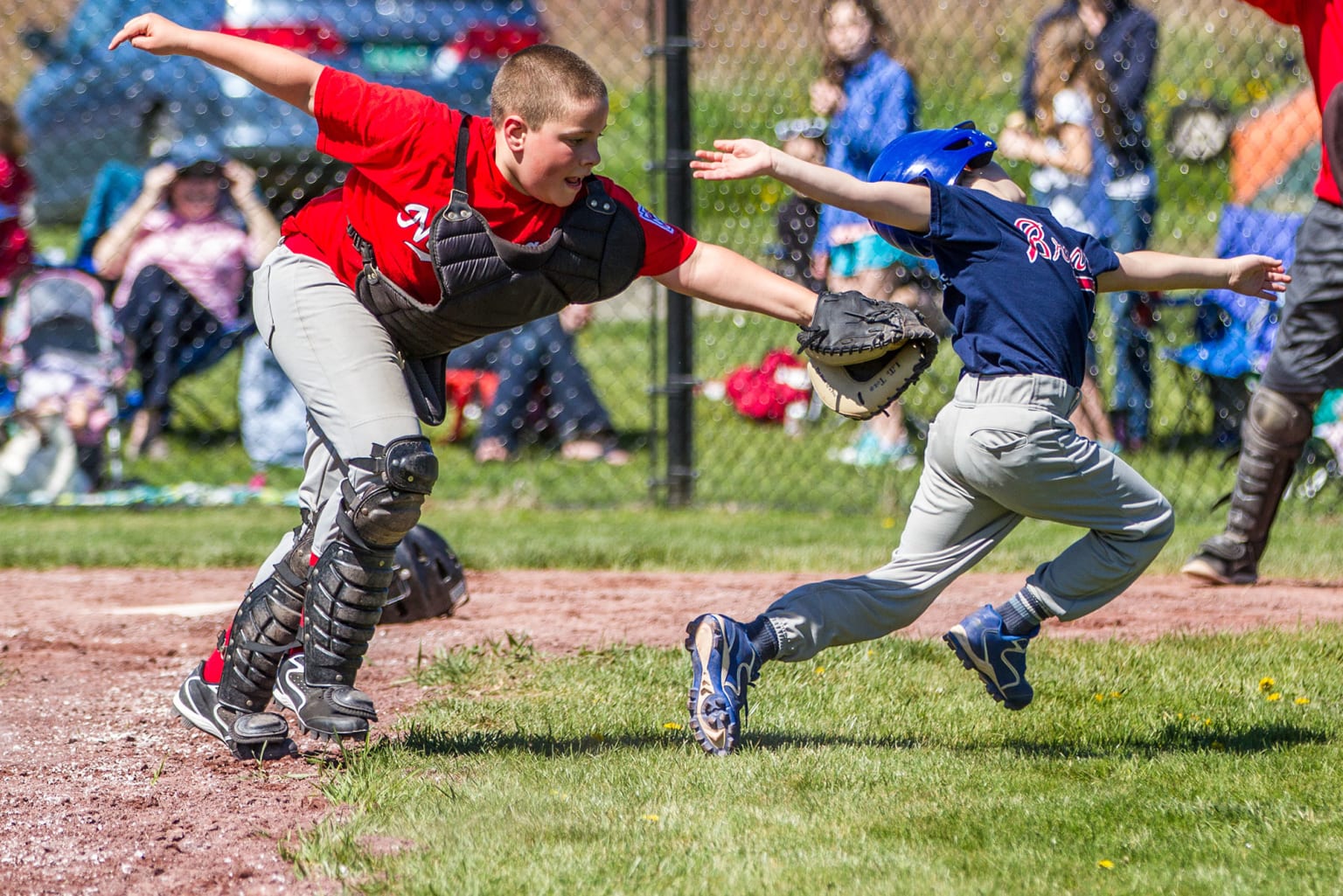
This month, we will explain and outline the rule governing interference when a batter-runner is contacted by a thrown ball outside of the runner’s lane. The situation described below is applicable in all divisions of Little League Baseball® and Little League Softball®.
Situation
In the top of the fourth inning, with two outs and a runner on second base, the batter swings and taps a ground ball down the first-base line. The catcher charges out from behind home plate, fields the ball, and throws the ball toward first base. The ball ricochetes off of the batter-runner and careens into foul territory down the right field line. The umpire, who is trailing the batter-runner, immediately stops play by calling “time.” Before the runner from second base scored, the batter-runner is called out for interference. Before the next batter enters the batter’s box, the Manager of the offensive team approaches the home plate umpire and asks for an explanation on the “out” call.
Ruling
In the judgment of the home plate umpire, the batter-runner was hit with the thrown ball while running outside of the runner’s lane. The umpire’s opinion was that interference occurred, which resulted in the catcher not being able to complete the play with an accurate throw to the first baseman. Since the umpire immediately killed the play, the resulting run was disallowed counted.
Explanation
Rule 6.05(j) The batter is out when in running the last half of the distance to first base, while the ball is being fielded to first base, the batter runs outside (to the right of) the three foot line, or inside (to the left of) the foul line, and in the umpire’s judgment in so doing interferes with the fielder taking the throw at first base; except that the batter-runner may run outside (to the right of) the three foot line or inside (to the left of) the foul line the to avoid the fielder attempting to field a batted ball. APPROVED RULING: The lines marking the three foot lane are part of the lane and the batter-runner is required to have both feet within the three foot lane or on the lines marking the lane.
It is the first baseman’s ability to catch the ball that is being interfered with not the catcher fielding the batted ball.
RULE 2.00 INTERFERENCE (a) – If the umpire declares the batter, batter-runner or a runner out for interference, all other runners shall return to the last base that was, in the judgment of the umpire, legally touched at the time of interference, unless otherwise provided by these rules.
And
RULE 2.00 INTERFERENCE (e) – on any interference the ball is dead.
These are the two rules which support the umpire’s decision.